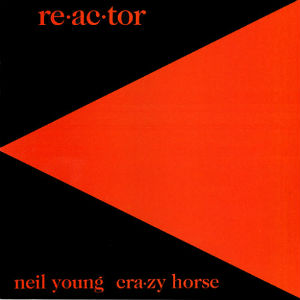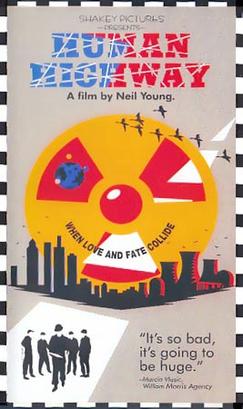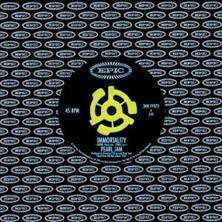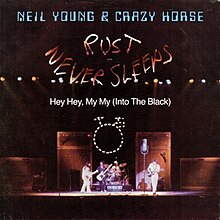
Neil Percival Young is a Canadian and American singer and songwriter. After embarking on a music career in Winnipeg in the 1960s, Young moved to Los Angeles, joining the folk-rock group Buffalo Springfield. Since the beginning of his solo career, often with backing by the band Crazy Horse, he has released critically acclaimed albums such as Everybody Knows This Is Nowhere (1969), After the Gold Rush (1970), Harvest (1972), On the Beach (1974), and Rust Never Sleeps (1979). He was also a part-time member of Crosby, Stills, Nash & Young, with whom he recorded the chart-topping 1970 album Déjà Vu.

Crazy Horse is an American rock band best known for their association with Neil Young. Beginning in 1969 and continuing to the present day, they have been co-credited on a number of Young's albums, with 15 studio albums and numerous live albums being billed as by Neil Young and Crazy Horse. They have also released six studio albums of their own, issued between 1971 and 2009.

"Rockin' in the Free World" is a song by Canadian-American singer, musician and songwriter Neil Young, released on Young's seventeenth studio album Freedom (1989). Two versions of the song bookend the album, similarly to "Hey Hey, My My " from Young's Rust Never Sleeps album, one of which is performed with a predominantly acoustic arrangement, and the other predominantly electric. Rolling Stone magazine ranked "Rockin' In the Free World" number 214 on its "500 Greatest Songs of All Time"

"Drain You" is a song by American rock band Nirvana, written by vocalist and guitarist, Kurt Cobain. It is the eighth track on their second album, Nevermind, released in September 1991. The song was released as a promotional single in late 1991, and also appeared as a b-side on UK retail editions of the first single from that album, "Smells Like Teen Spirit".

Weld is a live album by Neil Young and Crazy Horse released in 1991, comprising performances recorded on the tour to promote the Ragged Glory album. It was initially released as a limited edition three-disc set entitled Arc-Weld, with the Arc portion being a single disc consisting in its entirety of a sound collage of guitar noise and feedback. Arc has since been released separately.

Rust Never Sleeps is the tenth album by Canadian American singer-songwriter Neil Young and American band Crazy Horse. It was released on June 22, 1979, by Reprise Records and features both studio and live tracks. Most of the album was recorded live, then overdubbed in the studio, while others originated in the studio. Young used the phrase "rust never sleeps" as a concept for his tour with Crazy Horse to avoid artistic complacency and try more progressive, theatrical approaches to performing live.

Sleeps with Angels is the 20th studio album by Canadian musician Neil Young, released on August 16, 1994, on Reprise as a double LP and as a single CD. The album is Young's seventh with Crazy Horse. Co-produced by David Briggs, the album is Young's last with his long-time producer, who died the following year. The title track was written and recorded as a tribute to Kurt Cobain in wake of his suicide. Although the rest of the album was recorded before that event, the album takes on a somber, subdued tone throughout. Musician and author Ken Viola described the album as one of Young's "top five records. It examines the nature of dreams — both the light and dark side — and how they fuel reality in the nineties. Dreams are the only thing that we've got left to hang on to."

"Mongoloid" is the first single released by American new wave band Devo in 1977, on the Booji Boy Records label. It was backed with the song "Jocko Homo". "Mongoloid" also had one of the first music videos made using collage. "Mongoloid" would later be re-recorded by Devo and appeared on the album Q: Are We Not Men? A: We Are Devo! in 1978. It is also a staple of Devo's live shows.

Duty Now for the Future is the second studio album by American rock band Devo, released in 1979 by Warner Bros. Records. Produced by Ken Scott, the album was recorded between September 1978 and early 1979 at Chateau Recorders in Hollywood. The majority of the songs on the album had been performed in Devo's live set as early as 1976.

Booji Boy is a character created in the early 1970s by the American new wave band Devo. The name is pronounced "Boogie Boy"—the strange spelling "Booji" resulted when the band was using Letraset to produce captions for a film, and ran out of the letter "g". When the "i" was added but before the "e", Devo's lead singer Mark Mothersbaugh reportedly remarked that the odd spelling "looked right".

Live Rust is a live album by Neil Young and Crazy Horse, recorded during their fall 1978 Rust Never Sleeps tour.

"My My, Hey Hey " is a song by Canadian musician Neil Young. An acoustic song, it was recorded live in early 1978 at the Boarding House in San Francisco, California. Combined with its hard rock counterpart "Hey Hey, My My ", it bookends Young's 1979 album Rust Never Sleeps. Inspired by electropunk group Devo, the rise of punk and what Young viewed as his own growing irrelevance, the song significantly revitalized Young's career.

Re·ac·tor is the twelfth studio album by Canadian folk rock musician Neil Young, and his fourth with American rock band Crazy Horse, released on November 2, 1981. It was his last album released through Reprise Records before he moved to Geffen for his next five albums.
"Sedan Delivery" is a song written by Neil Young that was first released on his 1979 album with Crazy Horse, Rust Never Sleeps.
Devo 2.0 was a pop group quintet, created for Walt Disney Records, of child actors who sing, dance, and mime playing instruments along to songs re-recorded by some of the original members of Devo. Jerry Casale directed all nine of the videos. Actress Jacqueline Emerson, who later appeared in The Hunger Games, was a member. The band split up in 2007 when lead singer Nicole Stoehr and lead guitarist Nathan Norman quit.

Human Highway is a 1982 American comedy film starring and co-directed by Neil Young in his film and directional debut under his pseudonym Bernard Shakey. Dean Stockwell co-directed the film and acted along with Russ Tamblyn, Dennis Hopper, and the band Devo. Included is a collaborative performance of "Hey Hey, My My " by Devo and Young with Booji Boy singing lead vocals and Young playing lead guitar.

"Dare to Be Stupid" is an original song by "Weird Al" Yankovic. It is a musical pastiche of the band Devo. Released as the flipside to "The Touch", the song was included in the soundtrack for The Transformers: The Movie and is his most popular original song.

Frank "Poncho" Sampedro is an American retired guitarist and member of the rock band Crazy Horse, known mainly for his longtime collaboration with singer-songwriter Neil Young. Sampedro has played and recorded with Young in many other configurations aside from Crazy Horse and earned co-writing credits on several Young songs. Out of all Young's musical collaborators, Sampedro has proven perhaps the most adept at working with the mercurial artist. "Most people turn a corner. Neil ricochets," says Sampedro.

"Immortality" is a song by the American rock band Pearl Jam, released on June 6, 1995, as the third single from the band's third studio album, Vitalogy (1994). Although credited to all members of Pearl Jam, it was primarily written by vocalist Eddie Vedder. The song peaked at number 10 on the Billboard Mainstream Rock Tracks chart. The song was included on Pearl Jam's 2004 greatest hits album, rearviewmirror .
"Powderfinger" is a song written by Neil Young, first released on his 1979 album Rust Never Sleeps. It subsequently appeared on several of Young's live recordings. A 2014 Rolling Stone special issue on Young ranked it as Young's best song ever.

















